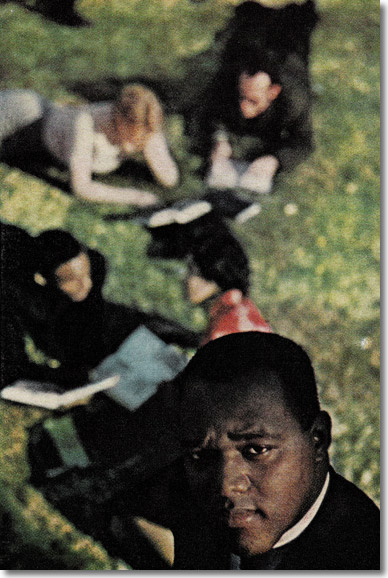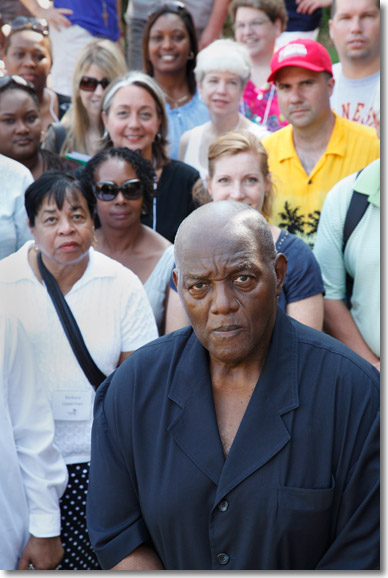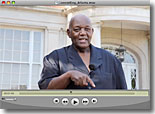Lonnie C. King "The Second Battle for Atlanta"
 Cal Bernstein photographed Lonnie C. King in 1961 on "the Quad" at Morehouse College where he organized thousands of students to sit-in at lunch counters downtown. LOOK wrote, "At 24, this former Morehouse College fullback is sharply aware of his own inadequacies; but he often seems 'arrogant' to white Atlantans because he approaches them as an equal rather than as an inferior." Even in 1960, when most of America was still dozing, there were rumblings that would wake up a generation – particularly in the civil rights arena. Lonnie C. King was a 23 year old Morehouse College student in Atlanta in 1960. He was also a Navy veteran, a boxer, starting fullback on the football team and a natural leader. He heard about four young African Americans who had the audacity to sit in at a Woolworth's department store lunch counter, simply asking to be served. "They lit a flame that engulfs me to this day," King says. He went to his friend Julian Bond and said, "Let's follow Greensboro. After some cajoling, we all went out and starting organizing." What they organized was characterized by LOOK Magazine in April 1961 as "The Second Battle of Atlanta." King and his friends organized sit-ins and boycotts to demand integration of the stores, lunch counters, movie theaters and courthouses of Atlanta. In the military, in the boxing ring, and on the football field, King had known violence. But he and his friends embraced the principles of non-violence taught to them by Martin Luther King, Jr. (no relation), whose father had baptized King. Their manifesto read, in part, "Non-violence does not seek to defeat or humiliate the opponent, but to win his friendship… The attack is directed against forces of evil rather than against the persons who happen to be doing the evil. It is based on the conviction that the universe is on the side of justice. At its center stands the principle of love." King now admits he felt fear. "These people bring forward the billy clubs and the dogs and the shootings and the beatings," he says, "when all you're asking for is a hamburger, when all you're asking for is the right to travel in interstate commerce without having to go … in the back of the bus." |

Lonnie C. King talking with a group of teachers from all over the nation touring sites of the 60s civil rights struggle. July 2010. Today, Lonnie is proud to be known as a civil rights pioneer, and he's still active in the movement. At 73 (in 2010), he's getting his doctorate in history so that may inspire young people. "If I can get my PhD at my age with high honors," he says, "I can tell a Kindergarten kid or a fifth-grader, 'You can do it! I was born looking up at the bottom, and if I can do it, you can do it.'" Growing up, he and his mother, Bertha Flasher, lived in a shack off an alley behind a fish market. "It was a typical alley situation where poor black people lived behind the main street," he recalls. "My mother worked for Elizabeth Mitchell whose daddy built the Hurt Building downtown. And one evening I was on TV at 6:30, I understand. I was talking about freedom." Lonnie thinks that the fact that his mother remarried and had a different last name saved her job. "Miss Mitchell looked at the TV as I was talking. She looked at the TV. She looked at my mother, looked at the TV, and back at my mother. She said, 'Bertha, do you know that boy?' "And my mother said, 'No, I don't.'" "I got a call that night from my mother, who was crying. She said, 'You know, I had to disown my only child today in order to keep this $5-a-day-and-car-fare job.' … So, it's difficult for you 50 years later to understand the oppressiveness that went on." Both in an extensive oral history interview and in documentary video of Lonnie talking with teachers today, the emotions of those events half a century ago still resonate. Those events changed everyday people and still impact our lives today. |





